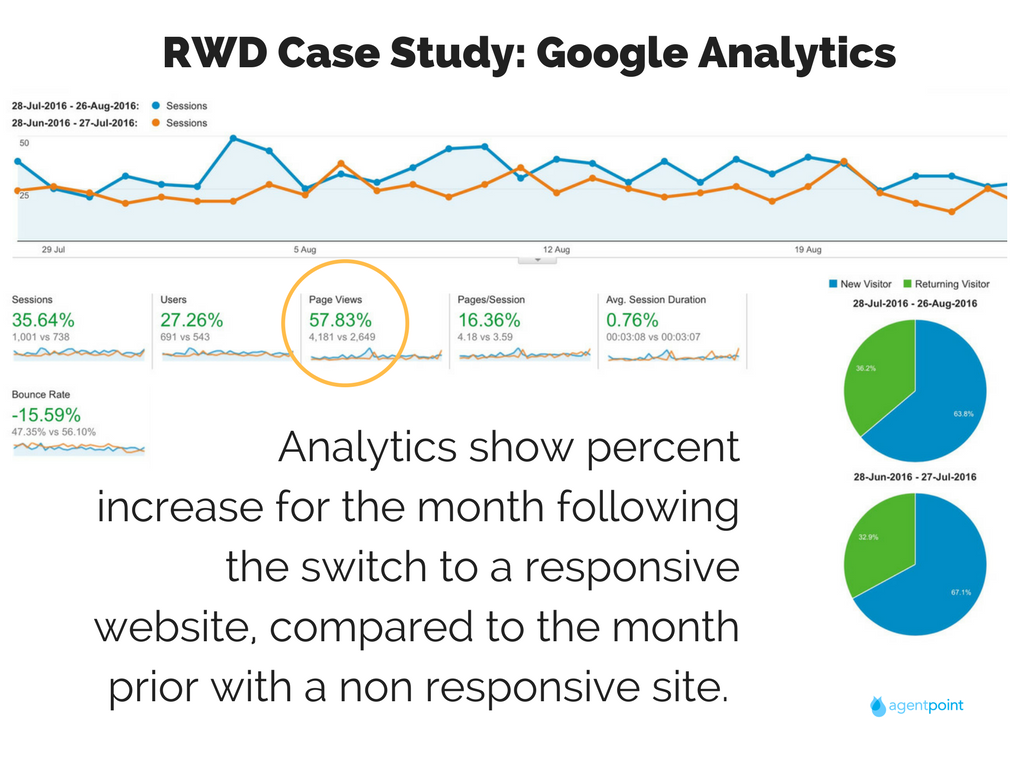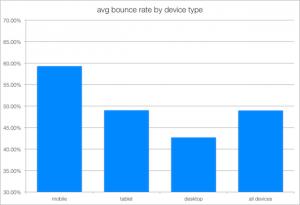
One of our clients switched to a responsive website and we tracked their Google Analytics to watch the results of optimisation unfold. The first and most dramatic statistic to note, circled in orange, is a 57% increase in page views. This means, if on average site visitors were looking at 3 pages before leaving the site, they are now viewing upwards up 6 pages per visit. One example of why this would be is before having a responsive website with client had a mobile version site with a URL like “m.lorumespon.com.au”. Although these worked in the early days of the web, when constant change and content creation was not the norm, it is no longer the case. Because the URL was different, desktop and mobile sites were coded separately and to save time and cost, many pages were simply left off the mobile site or not added when a new product, new blog post or other page was added to desktop. This is essentials the same as restricting half your customers to a corner of your inventory!
Sessions are a group of interactions a person might have with a site within a time frame. A single session can contain multiple page views, interactions and even transactions. Our client saw a 35% increase in overall sessions compared to the month previous to upgrading to a responsive site. Another great result of the upgrade was the bounce rate decrease by 15%. What is a bounce rate? It is the percentage of single page visits or sessions when a person leaves your site without clicking through to any other page to get more information. A general guideline 26-40% is excellent, 41-55% is good, 56-70% is higher than average and anything above 71% is poor.

Another thing to take into consideration with bounce rate is device type. Mobile visits will generally have a higher bounce rate due to the nature in which people use their mobile devices for quick investigation where as with a desktop bounce rate is generally lower. With this is mind we were quite pleased to see the bounce rate change so dramatically based on mobile optimisation.
Want to learn more about responsive web design? Check it out HERE
